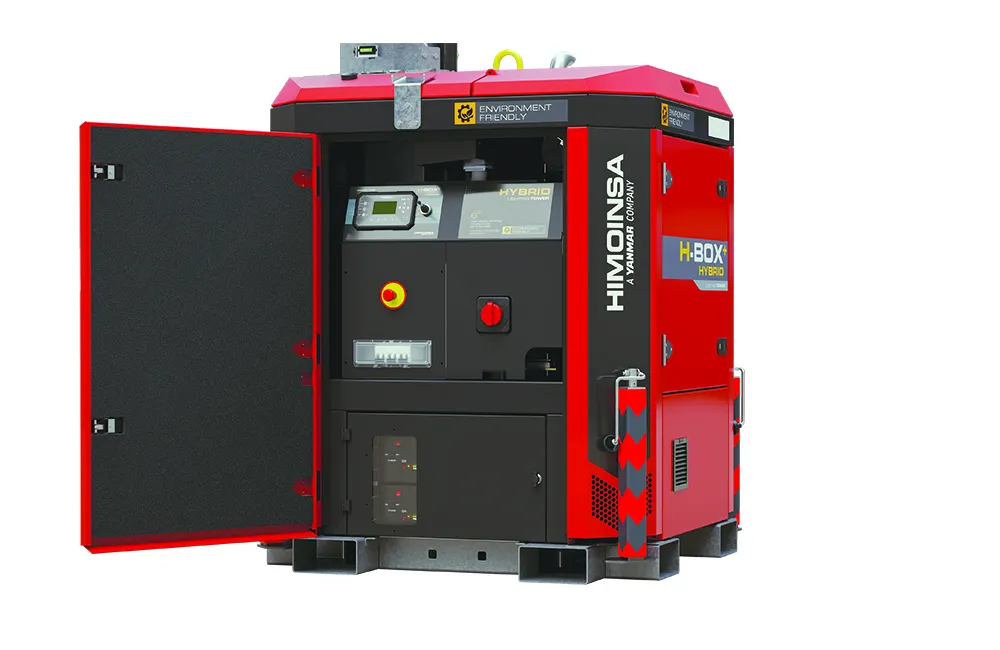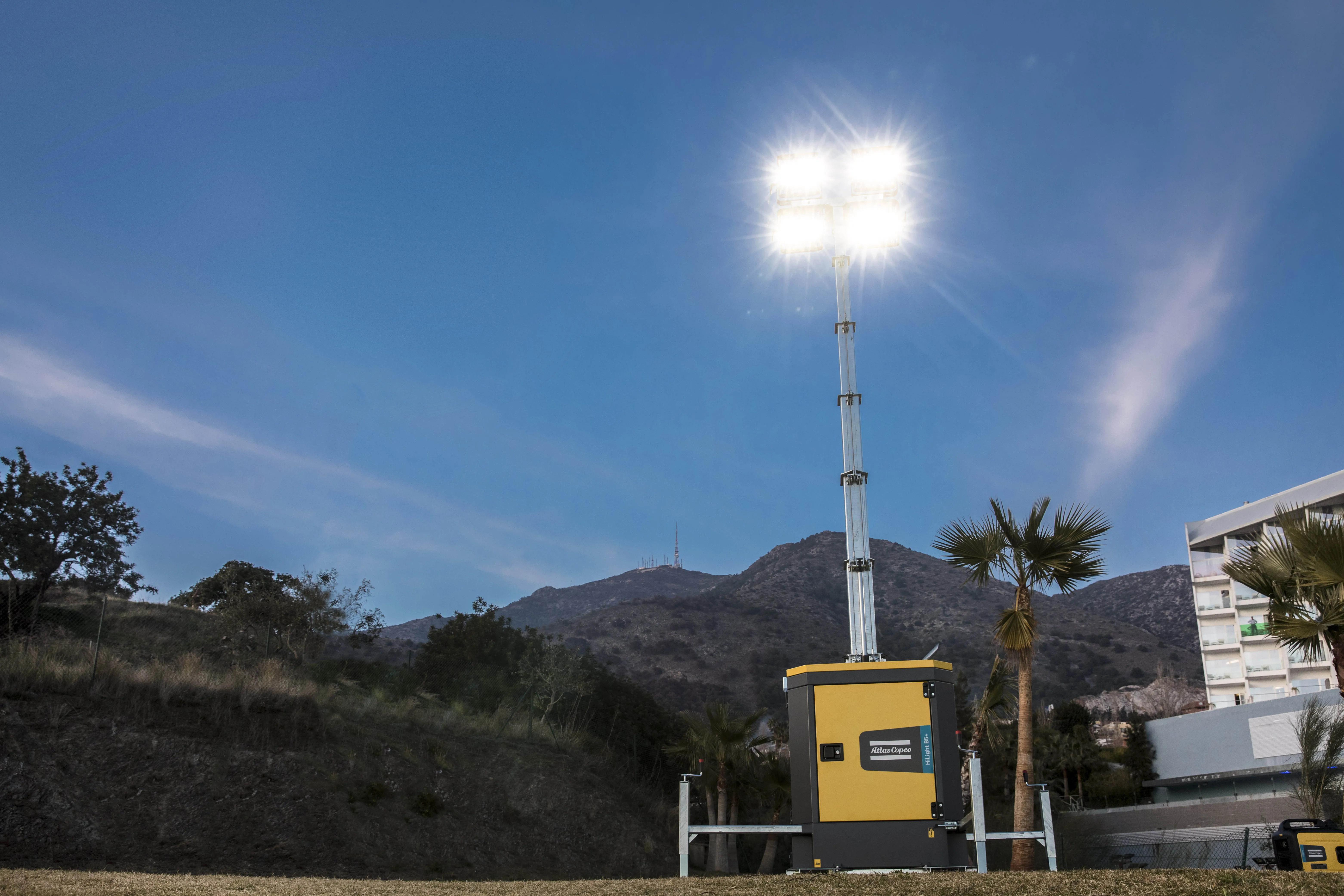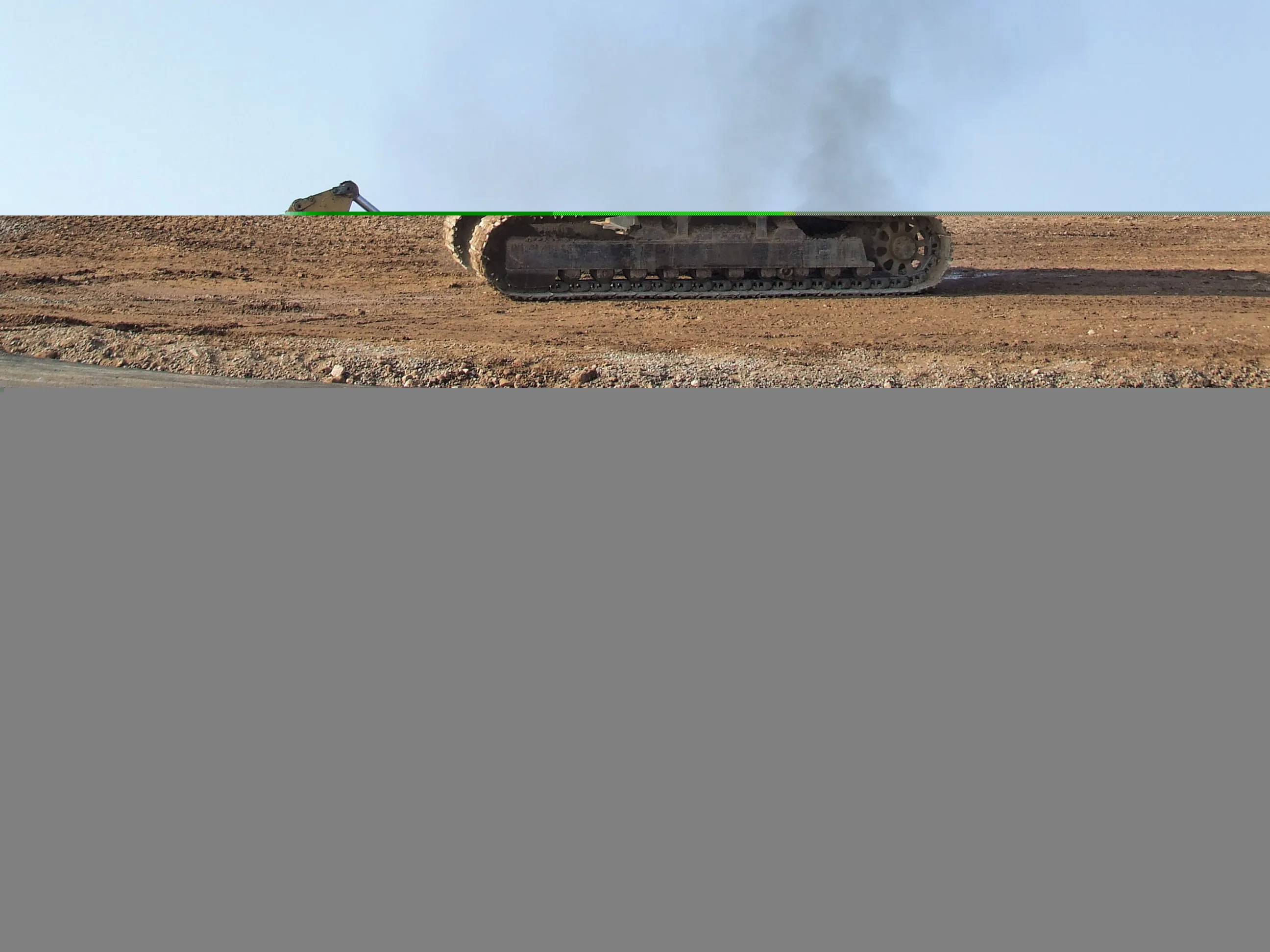
It combines an LFP battery and Yanmar Stage V diesel engine, an ideal solution for work areas requiring low sound emissions and reduced CO2 emissions, according to the manufacturer.
The unit offers the advantages of a hybrid system in terms of carbon footprint reduction, without having to sacrifice the benefits of the 100% diesel version, including its ample wide lighting footprint, among other aspects.
It retains all the performance of the HBOX+ diesel version (6,400m2 at 20 lux on average) while adding the competitive advantages of a battery-powered hybrid system, according to Miguel Ángel Ruiz, head of global engineering and development for Himoinsa. “This is a versatile lighting tower that can operate in four different working modes, as required by the client at any given time, either in electric 100% battery or 100% diesel operating mode, as well as in hybrid diesel-battery mode or even powered by the grid or any other external power source such as a generator set.”
Key to this new development is that in none of the selected working modes is there a reduction in lighting capacity, even when the hybrid option is selected. The company said the system can reduce up to 2,600kg/year of CO2, operating eight hours per day in hybrid mode.
The CET8 smart controller, developed by Himoinsa, incorporates an assistant that guides the user for easy setup and operation. With only four clicks the system will be running at the point of maximum efficiency in each application.
The connectivity and remote control of the equipment is guaranteed through the CET8 Hybrid APP. With this, users can control the equipment from a smartphone, tablet or PC and consult key indicators like battery status, fuel level, and service time, or even manage the equipment’s performance. They can decide, among other things, whether they want more running time or more lighting capacity in a very intuitive way by using the assistant.
This equipment has been designed to offer the user the possibility of maximising battery operating time and minimising engine use, therefore guaranteeing as much zero noise operation as possible. This period can be programmed: the smart control system of the HBOX+ Hybrid will automatically manage the equipment’s best performance based on the hours defined by the user for this zero noise period. An easy and intuitive management process that is carried out through the assistant integrated in the CET8 Hybrid controller.
The HBOX+ Hybrid provides a continuous running time of up to sixteen hours with zero emissions and zero noise. This hybrid lighting tower has an integrated dimming system that can automatically regulate the different variables (light intensity, battery running time, etc.) and select, in a flexible way, the best working mode according to each case.








